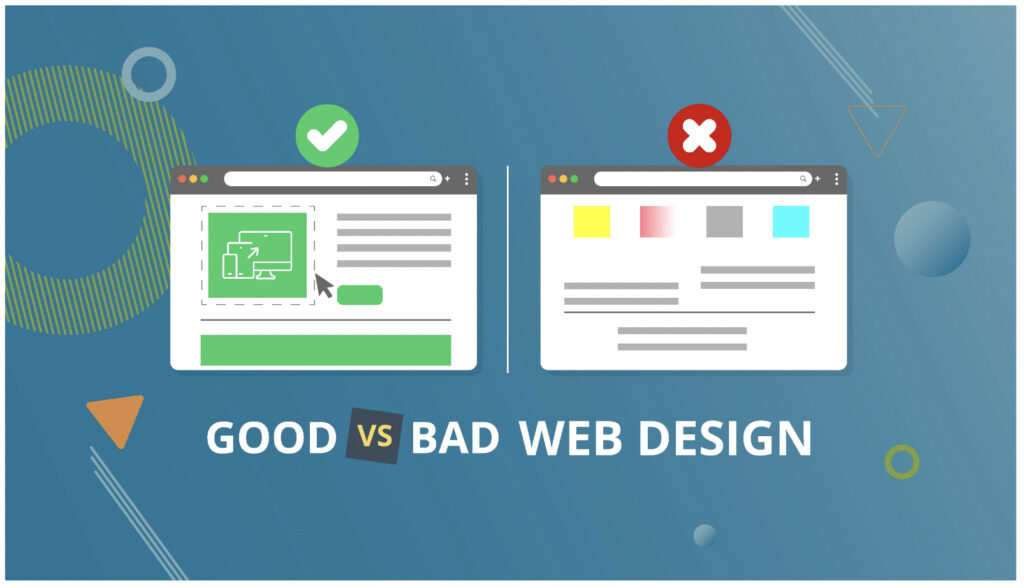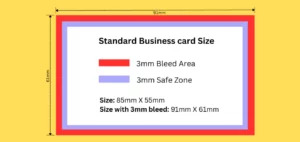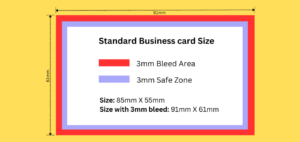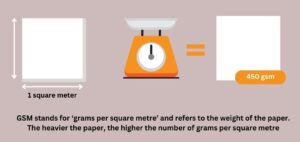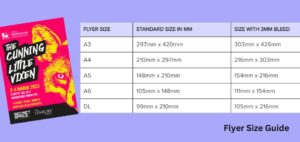In today’s digital age, a well-designed and user-friendly website is crucial for small businesses looking to capture the attention of potential customers and drive sales.
A poorly designed website, however, can cost you countless opportunities for growth and success.
89% of consumers shop with a competitor after a poor user experience.” ( Oracle, 2020 )
With users forming an opinion about your website within a matter of seconds, it’s vital to make a strong and lasting impression. Failing to do so could result in visitors quickly bouncing off your site, never to return, and taking their business to your competitors.
A subpar website can cause a multitude of issues, from confusing navigation and slow loading times to unattractive visuals and unclear calls-to-action.
These factors can lead to a frustrating user experience, making it difficult for potential customers to find the information or products they need, and ultimately dissuading them from converting.
To avoid the pitfalls of a poorly designed website and ensure that you’re capturing every opportunity for growth and conversion, it’s crucial to understand and implement the key elements that contribute to a successful online presence.
Deal: Make a great impression in your business circle with discoverPrint business cards.
In this post, we’ll explore ten essential website components that can help transform your site into a powerful sales-driving tool, positioning your small business for long-term success.
Also read: Key UK Small Business Statistics You Need To Know In 2023
Small Business Website Secrets
Clear value proposition
A strong value proposition is crucial for attracting and retaining customers, as it highlights the unique benefits and advantages of your products or services.
By clearly communicating what sets your business apart from competitors, you can capture your target audience’s attention and encourage them to choose your offerings over others.
To implement a clear value proposition on your webpage, consider the following suggestions:
- Conduct market research to understand your customers’ needs, preferences, and pain points.
- Identify the key differentiators of your products or services, focusing on the aspects that address your customers’ needs or solve their problems.
- Craft a compelling value proposition statement that succinctly communicates the benefits of choosing your business.
- Position your value proposition prominently on your homepage and reinforce it throughout your website using headlines, subheadings, and product descriptions.
- Use visual elements, such as images or videos, to support your value proposition and demonstrate the benefits of your products or services.
Responsive design
A responsive website design ensures that your site is accessible and user-friendly across various devices and screen sizes, providing a seamless browsing experience for all users.
With more people using mobile devices to access the internet, a responsive design can help you reach a broader audience, reduce bounce rates, and improve conversion rates.
To implement a responsive design on your webpage, consider these suggestions:
- Choose a responsive theme or template if you are using a content management system (CMS) like WordPress or Shopify.
- Use fluid grids and flexible images to create a layout that automatically adjusts to different screen sizes.
- Implement mobile-first design principles, ensuring that your site looks and functions well on smaller screens before optimizing for larger devices.
- Optimize website elements, such as navigation menus, buttons, and forms, for touch input on mobile devices.
- Test your website’s responsiveness using tools like Google’s Mobile-Friendly Test or BrowserStack to ensure optimal performance across various devices and browsers.
Also Read: What Does NCR Form Stand For?
Compelling calls-to-action (CTAs)
Clear, concise, and actionable CTAs guide visitors towards taking the desired action, such as making a purchase, signing up for a newsletter, or contacting you for more information.
Well-placed and persuasive CTAs can significantly increase conversion rates and drive sales.

To incorporate effective CTAs on your webpage, consider these suggestions:
- Use action-oriented language, such as “Buy Now,” “Sign Up,” or “Get Started,” to encourage users to take immediate action.
- Make your CTAs visually prominent by using contrasting colors, bold fonts, and noticeable button sizes.
- Place CTAs strategically throughout your website, ensuring they are visible and accessible on every page.
- Test different CTA variations, such as wording, colors, and placement, to determine what works best for your target audience.
- Keep the user journey in mind and use relevant CTAs that align with the content on each page, guiding users through the decision-making process and ultimately towards conversion.
Customer testimonials and reviews
Positive customer feedback and reviews play a vital role in building trust and credibility with potential customers. Social proof can significantly influence purchasing decisions, and showcasing satisfied customers’ experiences can encourage others to convert.
To display testimonials and reviews effectively on your webpage, consider these suggestions:
- Create a dedicated testimonials or reviews section on your homepage or a separate page accessible through the main menu.
- Include a mix of text-based and video testimonials to cater to different user preferences.
- Display customer reviews on product pages to help potential buyers make informed decisions.
- Encourage customers to leave reviews by offering incentives, such as discounts or free products, or by sending follow-up emails after a purchase.
- Respond to negative reviews professionally and promptly, demonstrating your commitment to customer satisfaction and continuous improvement.
Easy navigation
A well-organised website with clear headings and an intuitive menu structure makes it easy for visitors to find relevant information and products, leading to a better user experience and increased conversions.
To ensure easy navigation on your webpage, consider the following suggestions:
- Create a logical and straightforward menu structure that groups related pages together.
- Use descriptive menu labels that accurately represent the content on each page.
- Include a search bar to help users quickly find specific products or information.
- Utilize breadcrumb navigation to help users understand their location within your website and easily navigate back to previous pages.
- Optimize the website’s navigation for mobile devices by implementing a mobile-friendly menu, such as a “hamburger” menu or drop-down list.
Also Read: What Info To Include On Business Card?
Website speed
Website speed is a critical factor in providing an exceptional user experience, as it affects not only user engagement but also search engine rankings.
A fast-loading website ensures that users can access the content they need quickly and efficiently, which ultimately increases the likelihood of conversions and sales.
Moreover, search engines like Google prioritise fast-loading websites in their rankings, further highlighting the importance of website speed for your online success.
Pages that load within two seconds have an average bounce rate of 9%, while pages that take five seconds to load have a bounce rate of 38%.” (Source: Pingdom)
To optimise your website’s speed, consider these suggestions:
- Compress images and files to reduce their size without sacrificing quality, using tools like TinyPNG or gzip.
- Implement browser caching to store static files, such as images and CSS files, in users’ browsers, reducing the need to download them on subsequent visits.
- Minify HTML, CSS, and JavaScript files by removing unnecessary characters, comments, and whitespace, using tools like UglifyJS or CSSNano.
- Use a Content Delivery Network (CDN) to distribute your website’s files across multiple servers worldwide, ensuring faster load times for users regardless of their location.
- Optimize server response time by upgrading your web hosting plan, using server-side caching, or implementing performance optimizations, such as HTTP/2.
By focusing on website speed, you can create a more enjoyable user experience, increase your search engine rankings, and ultimately drive more sales and conversions for your business.
Optimize for search engines (SEO):
Implementing SEO best practices can improve your website’s visibility on search engines, attracting more organic traffic and increasing the likelihood of sales and conversions.
By optimising various aspects of your website, you can enhance its search engine rankings and make it easier for potential customers to find your products or services.
To optimise your webpage for search engines, consider these suggestions:
- Perform keyword research to identify relevant and high-traffic keywords that potential customers are likely to use when searching for products or services similar to yours.
- Optimize meta tags, headers, and URLs with your target keywords to help search engines understand and index your content.
- Create valuable, keyword-rich content that addresses your audience’s needs and provides solutions to their problems. This can include blog articles, product descriptions, and informative guides.
- Improve your website’s loading speed by compressing images, minifying code, and utilizing caching techniques.
- Build high-quality backlinks from reputable websites to increase your site’s domain authority and improve its search engine rankings.
Order Duplicate Invoice books for your small business with us now.
In conclusion, a well-designed and optimized website is essential for small businesses looking to attract potential customers and drive sales.
By focusing on these key elements, you can transform your website into a powerful sales and marketing tool.
Each of these elements contributes to creating an exceptional user experience that encourages visitors to explore your website, learn about your products or services, and ultimately become customers.
By continuously monitoring your website’s performance and making improvements based on user feedback and analytics data, you can stay ahead of your competition and ensure long-term success for your small business.
Remember, your website is often the first impression potential customers have of your business, so it’s crucial to invest time and resources into making it the best it can be.
With a well-rounded approach, incorporating these critical elements into your website’s design and functionality, you’ll be well on your way to attracting more customers, increasing conversions, and growing your small business.
